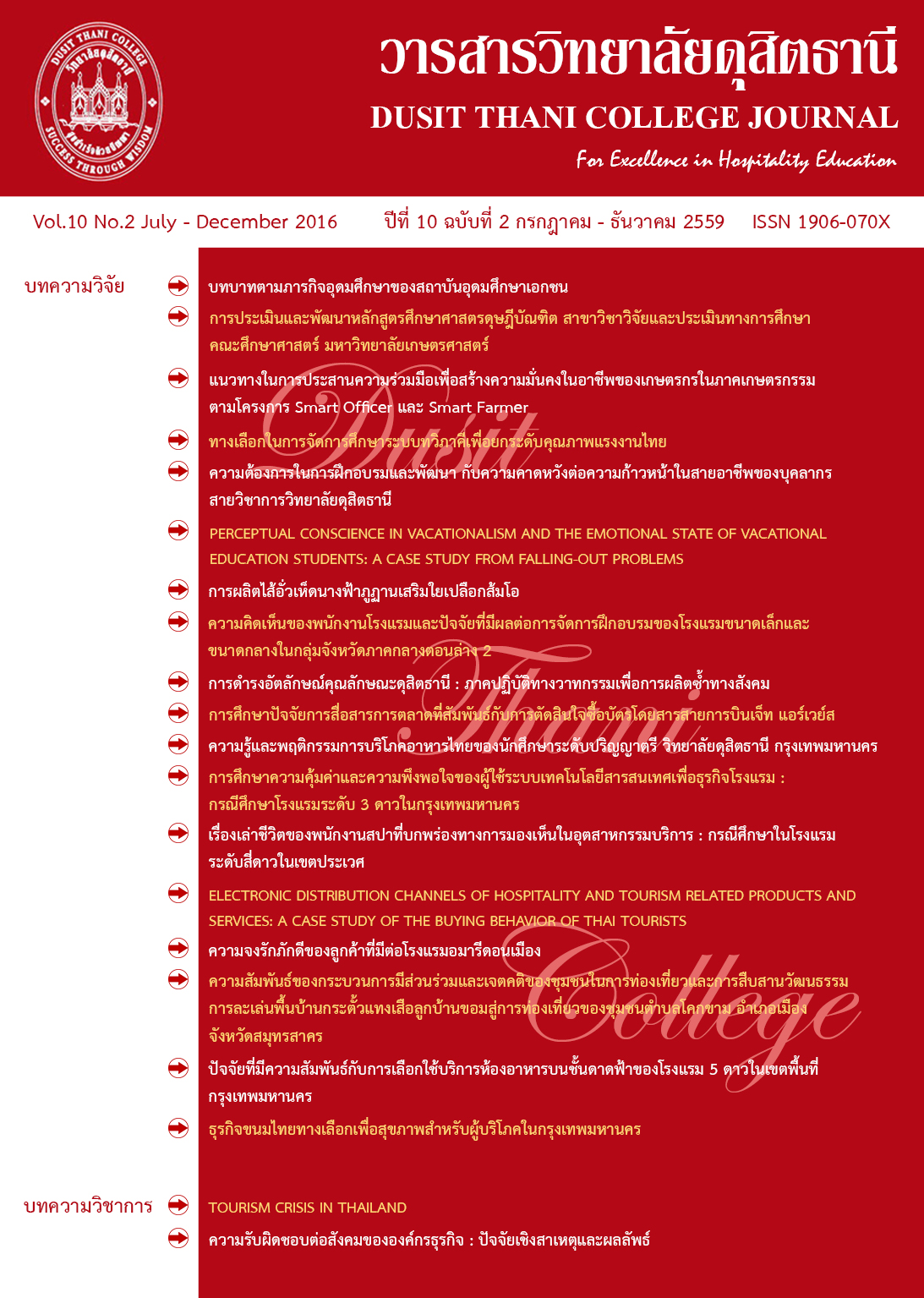THE ALTERNATIVES OF DUAL VOCATIONAL SYSTEM MANAGEMENT IN ORDER TO ENHANCE THAI WORKFORCE QUALITY
Main Article Content
Abstract
This research aimed to 1) investigate the lessons of success in Dual Vocational System of 10 countries: The United State of America, Germany, England, Denmark, Sweden, Switzerland, Australia, Austria and South Korea; 2) study the state of dual vocational system management in Thailand; and 3) seek the alternatives as solutions to those of the dual system management in Thailand. The documentary research was employed to synthesize the lessons of success in the 10 countries, while an in-depth interview with 4 selected vocational school leaders in order to obtain the data of current dual vocational management in Thailand. The research instrument used included a document analysis and semi-structured interview. The qualitative data derived were analysed using the descriptive analysis and content analysis techniques.
The findings revealed that the key factors of success, as the proposed alternatives for Thailand, included applying the legislation to reinforce the vocational mechanism and systematic succession, shifting a mindset and practice of vocational school leaders towards the vocational policy and legal framework. The main focus is on the teaching and learning process based on the “School-to-work” concept, strengthening the quality of vocational teachers and trainers academically and vocationally, and providing a counseling system throughout an educational pathway. It also includes an active collaboration between vocational institutions and enterprises along the education process, activating the quality assurance in a manpower production. The important strategy to begin with is to offer vocational routes in the secondary education. Students will learn to know and prepare themselves well for a vocational education which will result in the increased number of entrees in vocational education. When considering the vocational management in Thailand, it was found that the conception and best practice of vocational education was not fully operated. With regard to the alternatives for an effective Dual Vocational System, it should cover a provision of policy, vocational education act and legislation, preparation and competency of vocational teachers and trainers, educational counseling system, enterprise cooperation, and quality control system. This implementation should take place in the earlier stage wherein it is tended to prepare the learners in their secondary studies.
Article Details
Article Screening Policy
- All research and academic articles to be published must be considered and screened by three peer reviews in the relevant field / article.
- All articles, texts, illustrations and tables published in the journal are the personal opinions of the authors. Editors don't always have to agree. And no responsibility whatsoever is the sole responsibility of the author.
- The articles to be published must never be published. Where did you first publish? And not in the consideration of other journals If the audit found that there has been a duplicate publication It is the sole responsibility of the author.
- Any article that the reader sees as being plagiarized or impersonated without reference. Or mislead the work of the author Please let the journal editor know it will be your greatest blessing.
References
สำนักงานปลัดกระทรวงศึกษาธิการ. (2553). แผนพัฒนาการศึกษาของกระทรวงศึกษาธิการฉบับที่สิบเอ็ด พ.ศ. 2555-2559. กรุงเทพฯ: กระทรวงศึกษาธิการ.
Bremer, C. D. (1995). “Encouraging employer involvement in youth apprenticeship and other work-based learning experiences for high school students.” Journal of Vocational and Technical Education (Online).
http://scholar.lib.vt.edu/ejournals/JVTE/v12n1/bremer.html, October 1, 2013.
Cedefop. (2005). Vocational Education and Training in the United Kingdom.
Luxembourg: Office for Official Publications of the European Communities.
Cedefop. (2006). Vocational Education and Training in Austria. Luxembourg: Office for Official Publications of the European Communities.
Cedefop. (2007). Vocational Education and Training in Germany. Luxembourg: Office for Officia l Publications of the European Communities.
Cedefop. (2007). Vocational Education and Training in Germany. Luxembourg: Office for Official Publications of the European Communities.
Cedefop. (2009). Vocational Education and Training in Sweden. Luxembourg: Publications Office of the European Union.
Cedefop. (2011). The Benefits of Vocational Education and Training. Research Paper
No. 10. Luxembourg: Office of the European Union.
Cedefop. (2012). Norway VET- Country Report. The Norwegian Directorate for Education and Training with Contributions from Members of Refer Net Norway. (Mimeographed).
Cedefop. (2012). Vocational Education and Training in Denmark. (Short Description).
Luxembourg: Publications Office of the European Union.
OECD. (2009). Learning for Jobs: OECD Reviews of Vocational Education and Training- Korea. OECD. (Mimeographed).
OECD. (2009). Learning for Jobs: OECD Reviews of Vocational Education and Training-
Switzerland. OECD. (Mimeographed).
Ray, J. (2001). Apprenticeship in Australia: A History Snapshot. SA: Australian National Training Authority.
UNESCO. (1999). Technical and Vocational Education and Training: A vision for the Twenty-First Century. Seoul, Korea. (Mimeographed).
Wonacott. (2003). History and Evolution of Vocational and Career-Technical Education.
Columbus: Center for Vocational Education, the Ohio State University.


